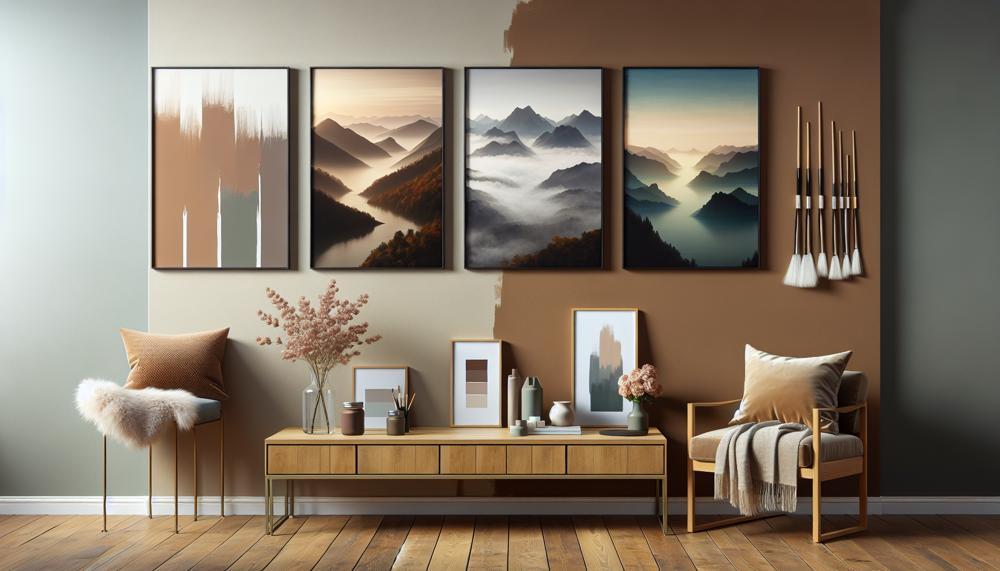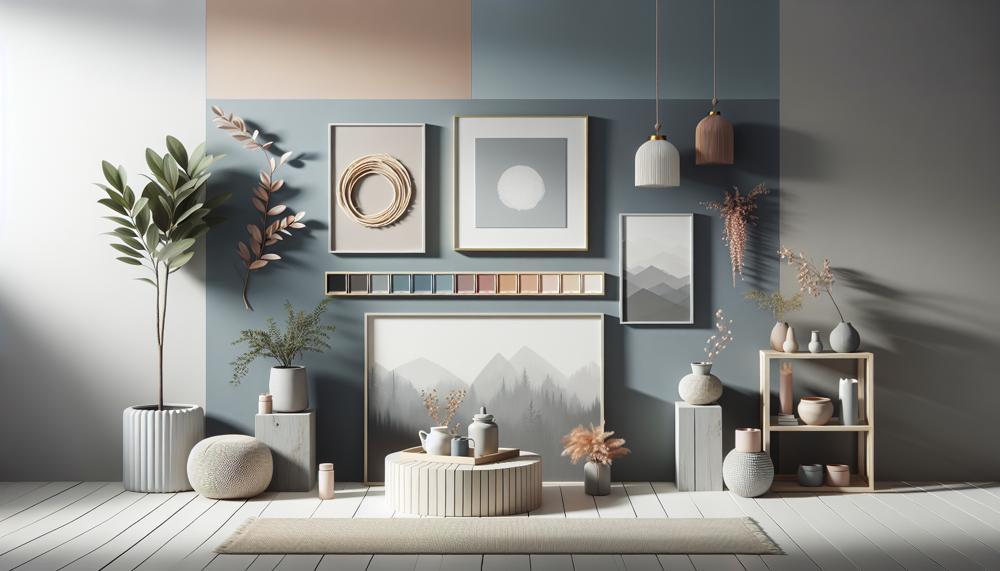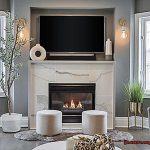The walls of a room can set the tone for its entire aesthetic, making the color choice a crucial decision.
With an endless array of shades available, it can be overwhelming to narrow down your options. However, two popular contenders that often come up in this dilemma are white and gray.
Each color has its own distinct characteristics and can drastically alter the ambiance of a space. So, which one should you go with?
Let’s dive in.
Contents
- 1 Have you ever ended up with the wrong paint color on your walls?
- 2 How to Avoid the Wrong White Paint Color
- 3 How Do You Identify Undertones In White Paint?
- 4 How to Choose White Paint for Walls
- 5 The Best Way To Test Paint Colors On Your Walls
- 6 How To Choose The Right White Paint for Cabinets
- 7 How To Choose White Paint For Trim
- 8 Best Interior White Paint Colors
- 9 Should you use the same white in every room?
- 10 Other Things to Consider When Choosing Colors For Your Home
Have you ever ended up with the wrong paint color on your walls?
The process of selecting the perfect paint color can be a daunting one, and at times, the color we believed to be ideal turns out to be a complete disaster.
As an expert in the realm of home improvement and decorating, I have encountered this issue countless times, both personally and professionally.
Yet, do not despair, for there are ways to handle a paint color that simply does not seem to work on your walls.
Agitate it
Before giving up on the paint color entirely, ensure that it has been stirred vigorously. At times, the pigment settles at the bottom of the can, resulting in an uneven tint.
Give it a thorough stir and attempt applying a second coat to see if it makes a difference.
Take into account drying time
Keep in mind that paint colors may appear different when they dry, so it is crucial to take this into consideration.
Allow the paint enough time to dry completely before making a final decision. If you are still unsatisfied, move on to the next tip.
Manipulate with color theory
In situations where the paint color is close to what you desired but just slightly off, you may be able to alter it utilizing knowledge of color theory.
For instance, if the shade is excessively warm, add a hint of blue to cool it down. A small adjustment can result in a significant transformation.
Sell or donate unused paint
If all else fails and you are unable to make the color work for your walls, do not let it go to waste.
You can effortlessly sell or donate unused paint to organizations such as Community Repaint.
This not only helps you dispose of unwanted paint but also benefits those in need.
Personal anecdote
Allow me to recount a personal experience with choosing an incorrect paint color for a guest bedroom.
How to Avoid the Wrong White Paint Color
With a plethora of options available, it can be overwhelming to make a decision. But fear not, as I am here to share some tips that will help you avoid making the wrong choice.
The first crucial step is to understand the different undertones of white. Yes, you read that correctly—there are varying undertones in white that can make a significant difference in how it appears on your walls.
Whether it’s warm, cool, blue, yellow, pink, or green undertones, each can give off a different vibe. Therefore, before picking a shade of white, ensure you comprehend its undertones and how they will interact with the lighting and other colors in your room.
Speaking of lighting, natural light plays a significant role in how a white paint color looks in a room. Take note of the direction of your windows and how much natural light enters the room throughout the day.
A bright room with ample natural light may make white paint appear cooler and brighter, while a darker room with limited natural light may make the same paint look warmer and duller. Keep this in mind when selecting a white shade for your walls.
Now, here’s a crucial tip: test multiple shades of white in different areas of the room. Don’t just rely on one swatch or paint chip; take the time to try the paint in various spots to see how it looks in different lighting conditions.
You can also experiment by painting small swatches on different walls to see how the color appears against various backgrounds. Trust me, this step can save you from making a costly mistake.
Consider the purpose of the room before choosing a white paint color. The function of the room can significantly impact the shade of white you should choose.
How Do You Identify Undertones In White Paint?
The process of choosing the perfect paint color can be overwhelming, especially when it comes to the various shades of white available. One key factor to consider is the undertones in white paint, which can greatly impact the overall look and feel of a room. To avoid any costly mistakes, it’s essential to understand and identify undertones in white paint.
Firstly, it’s crucial to grasp the concept of undertones. Every paint color has a mass tone, which is the overall color of the chip, and an undertone, which is the subtle underlying color that sets it apart from similar hues.
Undertones can be categorized into warm and cool colors. Warm colors have orange, yellow, or red undertones, creating a cozy or energetic vibe. In contrast, cool colors have blue, green, or purple undertones, bringing a fresh and soothing atmosphere.
Lighting is another crucial factor in identifying undertones in white paint. Natural light from different directions and artificial light from various bulbs can affect how colors appear. If you’re unsure about your chosen color, try changing your lightbulbs to see if it makes a difference.
To make an informed decision between white or gray paint, consider ordering free color chips or peel-and-stick samples from your local home improvement store. This will allow you to see how they look and feel at different times of day and under various lighting conditions.
If you’re still unsure about undertones, you can book a virtual color consultation with a professional. They can provide expert advice and help you choose the perfect undertone for your space.
How to Choose White Paint for Walls
The truth is, both white and gray have their own unique benefits and drawbacks, making it a challenging decision to make.
I’m here to assist you in making the right choice with my 4-step method for creating a color scheme when selecting white paint for walls.
Step 1: Take Your Space into Account
The first crucial step in choosing the perfect paint color is to consider your space. Factors such as lighting, room size, and existing decor should all be taken into consideration. For smaller rooms or spaces with limited natural light, white walls can create the illusion of a brighter and more spacious area.
On the other hand, if you have a larger room or ample natural light, gray walls can add depth and sophistication to the space.
Step 2: Consider Your Personal Style
Your personal style should also influence your decision. Do you prefer a crisp and clean look? Then white walls may be the ideal choice for you.
However, if you desire a cozy and inviting atmosphere, gray walls can provide that warmth. It’s essential to contemplate the purpose of the room and your personal preferences before making a decision.
Step 3: Test Before Committing
Before committing to a particular paint color, it’s crucial to test it out first. Paint a large swatch on your wall and live with it for at least 24–48 hours. This will allow you to see how the color looks in various lighting and against other elements in the room. It will also give you time to decide if the shade is right for you.
Step 4: Add Accent Colors
To add visual interest to your space, consider incorporating accent colors in addition to your chosen white paint.
The Best Way To Test Paint Colors On Your Walls
Follow these uncomplicated steps, and you’ll confidently choose the ideal hue for your space.
Step 1: Paint Broad Strokes in Multiple Spots
The initial step is to apply large strokes of both white and gray to your walls. It’s crucial to test the shades in multiple spots to witness how they appear in various lighting and on different parts of the wall. This will give you a well-rounded understanding of how the color will look in your space.
Step 2: Layer on Multiple Coats of Paint
To accurately gauge the color, it’s imperative to use at least two coats of paint. This will enable you to see the true depth and intensity of the color. If you’re experimenting with a dark gray, you may need to add three coats for a more precise representation.
Step 3: Observe Throughout the Day
Allow the paint to dry for a full day, and then examine the swatches throughout the day. This will provide you with a better grasp of how the color will appear in different lighting. Check it in the morning, afternoon, and evening to get a complete picture.
Step 4: Test in Natural Light and on Clean Surfaces
Make sure to test the paint colors in natural daylight, as artificial light can manipulate their appearance. Also, ensure that your walls are free from dirt before painting to prevent any interference with the true color.
Bonus Tip: Opt for a Large Painted Poster Board for Both Indoors and Outdoors
If you’re still struggling to decide on a color, try using a sizable painted poster board instead of a small swatch.
How To Choose The Right White Paint for Cabinets
White has always been the go-to choice for kitchen cabinets. It’s a timeless color that can instantly brighten up any space. But with so many options available, finding the right shade of white for your cabinets can be overwhelming.
I’ve done the research for you and gathered all the essential information to help you make the best decision.
Types of White Paint
There are three main types of white paint: pure whites, off-whites with yellow undertones, and off-whites with greige undertones. Pure whites, like Sherwin Williams High Reflective White, have no undertones and give off a clean and crisp look.
They pair well with cooler elements, like marble countertops, for a sleek and modern vibe.
Off-whites with yellow undertones, such as Benjamin Moore Chantilly Lace, add warmth to a space and create a cozy atmosphere. However, it’s important to note that these shades can appear too bright when paired with other elements that aren’t pure white.
For a softer, pure white option, consider Snowfall White. It has a subtle gray undertone that can be more suitable if the previous two suggestions are too bright for your taste.

On the other hand, off-whites with greige undertones have a mix of gray and beige tones. A popular choice in this category is Benjamin Moore White Dove, a versatile color that complements both pure whites and off-whites.
How To Choose White Paint For Trim
White is a popular choice for trim, as it can add a touch of elegance and brightness to any room. However, with the abundance of white paint shades and undertones available, selecting the right one for your trim can be a daunting task.
I have encountered this question many times and am here to guide you through the process of choosing the perfect white paint for your trim.
Take Lighting Into Consideration

The first thing to consider when selecting white paint for your trim is the lighting in your room. Lighting can greatly affect how white paint appears on your walls and trim.
If your room receives ample natural light, cooler-toned whites like pure white or icy white can create a clean and crisp look. These shades won’t appear too yellow or warm in natural light, making your space feel bright and inviting.
On the other hand, if your room lacks natural light, warmer-toned whites, such as creamy or ivory white, can add warmth and brightness to the space.
Existing Colors Matter
It’s essential to consider the existing colors in your room when choosing white paint for your trim. If you have warm-toned furnishings or accents, a cool-toned white may clash with the overall aesthetic of the room.
In this case, it would be best to stick with a warm-toned white for a harmonious color scheme. Similarly, if your room has cool-toned furnishings and accents, choosing a warm-toned white for your trim may create a disjointed look.
Always keep in mind the existing color scheme of your room when selecting white paint for your trim.
Don’t Overlook Undertones
Undertones are subtle hints of color that can affect how white paint looks on your walls and trim. For example, some whites may have pink, blue, or green undertones that can alter the overall appearance of the color.
Best Interior White Paint Colors
When it comes to choosing the perfect interior paint color, the decision can be overwhelming.
With so many options available, it can be challenging to know where to begin. One of the most common debates is between white and gray paint colors.
Both offer a neutral and versatile base, but which one is better? In this blog post, we will explore the top 12 best white paint colors for interior walls and compare them to gray options in terms of style and versatility.
Simply White by Benjamin Moore
First on our list is Simply White by Benjamin Moore. This warm white color is a favorite among interior designers for its versatility and ability to complement any style of decor.
It has a slight yellow undertone that adds warmth and depth to a room, making it a great choice for creating a cozy and inviting atmosphere. In comparison to gray options, Simply White offers a warmer and more welcoming feel.
Chantilly Lace by Benjamin Moore
For those looking for a crisp and clean white, Chantilly Lace by Benjamin Moore is the perfect option. This pure white color has no undertones, making it a true white that pairs well with any accent color.
It’s perfect for creating a modern and sleek look in any room. When compared to gray options, Chantilly Lace offers a brighter and more vibrant aesthetic.
Swiss Coffee by Behr
For a classic creamy white, Swiss Coffee by Behr is a popular choice. It has warm undertones that add a cozy feel to a room, making it perfect for traditional or farmhouse-style homes.
It also works well with both warm and cool accent colors. When compared to gray options, Swiss coffee offers a warmer and more inviting feel.
Alabaster by Sherwin Williams
Named the Color of the Year by Sherwin Williams in 2016, Alabaster is a warm white color with a subtle greige undertone.
Should you use the same white in every room?
First and foremost, lighting plays a crucial role in how a particular shade of white appears. Rooms with varying levels of natural or artificial light may call for different shades to achieve the desired effect. A room that basks in sunlight may benefit from a cooler white to counterbalance the warmth, while a dimly lit room may benefit from a warmer white to brighten it up.
Furthermore, the purpose of each room should also be taken into account when selecting a shade of white. For instance, a home office may require a brighter, crisper shade to stimulate productivity, whereas a bedroom may feel more serene with a softer, warmer shade.
The existing color scheme and furniture in each room are also important factors to consider. Using different shades of white can either complement or clash with certain colors and pieces, so it’s essential to have a cohesive vision for the entire house. For example, if your furniture has warm tones, using a cool-toned white may create an unbalanced look.
Expert tip: Some designers suggest using a warm white for public spaces like living rooms and dining rooms, while reserving cooler whites for private spaces like bedrooms and bathrooms.
Ultimately, personal preference and the overall design aesthetic of your home should guide your decision between using the same shade of white or opting for various shades.
If you prefer a clean and cohesive look, then using the same shade throughout may be the best choice for you. However, if you enjoy adding visual interest and dimension to each room, then using different shades may be the way to go.
Other Things to Consider When Choosing Colors For Your Home
Choosing the perfect paint color for your home is no easy feat. With a vast array of options at your disposal, it can be overwhelming to decide which hue will bring your space to life.
While personal preference is important, there are other crucial factors to keep in mind before picking up that paintbrush.
From highlighting architectural features to creating a cohesive color scheme, here are some key considerations to make when selecting paint colors for different areas of your home.
Eliminate to Illuminate
According to renowned color consultant Bonnie Krims, one of the best ways to narrow down your choices is by eliminating a few colors from the spectrum.
Instead of being overwhelmed by countless shades, begin by removing colors that you know do not align with your vision.
This will help you focus on a more manageable selection and simplify the decision-making process.
Crafting Cohesion with a 4-Step Technique
To achieve a harmonious color scheme throughout your home, consider utilizing a 4-step method. First, choose a neutral base color for the walls. Then, select an accent color based on the undertones of the base color.
Next, add a complementary hue for an extra touch of interest. Finally, opt for a contrasting shade to add depth and dimension to the space.
By following this approach, you can create a seamless flow between rooms while incorporating diverse shades.
Beyond Color – Consider Finish
When choosing paint colors, it is also essential to think about the finish of the paint. For walls, satin is typically recommended due to its subtle sheen that conceals imperfections and is easy to clean.
For trim and other architectural elements, opt for semi-gloss or high-gloss finishes to add sophistication and make them stand out.
Understanding the Influence of Color Psychology
Color holds immense power in shaping our mood and perception, making it crucial to consider the purpose of each room when selecting paint colors.
For instance, warm tones like red and yellow can stimulate energy and conversation, making them ideal for social spaces.





